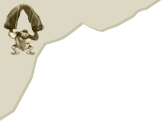Mount Carmel - a microcosm of cultural and biological evolution
Cultural Landscape
Cultural Criteria (v)
Natural Criteria (viii), (ix)
Description![]()
The Carmel Caves
The caves of Har HaCarmel are an important prehistoric site located along the canyon of Nahal Me'arot, the loveliest and most completely exposed fossilized rudist reefs in Israel, and these remarkable caves bear witness to the continuum of settlements of the life of prehistoric people. These caves, first excavated in the 1920’s, reveal continuous use by the bearers of the Acheulian, Acheulo-Yabrudian, Mousterian, Aurignacian, Natufian and Neolithic cultures, one of the rarest testimonies to the continuum of human settlement in one location for so long a period.
 |
| Mount Carmel Caves, Nahal Me'arot. From right to left: Tabun, Jamal and el-Wad caves. |
Its unique significance derives from (a) the fact that the long cultural sequence exposed at the five caves and rock-shelters that make up the site extends from the Lower Palaeolithic to the present day, thus representing nearly a million years of human evolution, (b) the many palaeo-environmental fluctuations registered in its geological and anthropogenic sedimentological sequence, and (c) the presence of two human types (Neanderthals and Early Anatomically Modern Humans). The numerous well-preserved Middle Palaeolithic burials of both types and the passage it extensively documents from nomadic hunter-gatherer groups to complex, sedentary agricultural societies are only the two most notable of the many cultural developments and revolutions the site witnessed over time in the way of life of the site's inhabitants.
The above factors emphasize the paramount significance of the Mount Carmel caves for the study of human cultural and biological evolution within the framework of palaeo-ecological changes. To this, one may add such other important aspects as the history of archaeological and palaeo-ecological research, the reconnaissance of palaeo-environmental changes and their rapport to bio-diversity management and ecological conservation, and the recent history of cave use in the area.
![]()
Oren Valley
Studies in Israel at the natural microscale model, designated “Evolution Canyon”, suggest that local, microcosmic natural laboratories mirror regional and global evolutionary scenarios. The model imitates the processes of biodiversity evolution, adaptation, and speciation across diverse organisms from bacteria to fungi, plants, and animals.
“Evolution Canyons” expose sharp ecological contrasts at a microscale permitting the pursuit of observations and experiments across diverse prokaryote and eukaryote taxa. The canyons share a sharp microecological inter-slope subdivision imitating ecological islands without any geographical barrier where abutting slopes are separated by 50 to 400 meters from bottom to top. Sharing the same geology and macroclimate, the opposing slopes differ only micro-climatically. The south-facing (SFS), or “African” slopes, in canyons north of the equator receive higher solar radiation than the nearby north-facing slope (NFS), or “European” slopes. The higher solar radiation causes higher temperature and drought on the more stressful “African” slopes causing dramatic physical and biotic inter-slope divergence, which may have originated a few million years ago after mountain uplifts. The “African” slopes represent open, dry, savanna-like plant formations whose plants and animals largely originated in the African continent. By contrast, the abutting “European” slopes represent lush, dense, south European and Mediterranean maquis shrubwood forests whose plants and animals largely originated in the European continent.
 |
a - “EC”I - Cross section. Lower Nahal Oren, Mount Carmel. Plant formation on opposite slopes. The green, lush, “European”, temperate, cool-mesic NFS sharply contrasts with the open park forest of warm-xeric, tropical, “African-Asian” savanna on the SFS. |
Since the “Evolution Canyons” harbor organisms from cyanobacteria to mammals with apparently convergent evolutionary processes affecting all, the canyons unravel ecological speciation in incipient status, displaying interslope intraspecies divergence and same-slope genomic and phenomic differential levels of convergences in species across the tree of life.
Assurance of Authenticity & Comparison
![]()
The Mount Carmel range and Caves in the original state are protected and managed by the National Parks and Nature Reserve Authority. It is also a declared MAB reserve.
There is ongoing multidisciplinary research of numerous other prehistoric sites on Mount Carmel (e.g., Kebarah, Oren, Misliya and Raqefet caves), as well as in the adjacent Galilee Mountains (e.g., Hayonim Cave).
Of the caves and hominid sites, there are comparative examples possibly in Gibraltar. On the basis of a global comparative survey on hominid sites, ICOMOS indicated that this site matched the six criteria for nomination.
Three “Evolution Canyons” (EC) have been studied hitherto in Israel: EC I, Lower Nahal Oren, Mount Carmel with about 2500 species identified since 1991 in an area of 7000 square meters; EC II, Lower Nahal Keziv, western Upper Galilee Mountains with more than 1000 species identified since 1998 in the same area as in EC I; and EC III, Nahal Shaharut in the Negev, with several hundred species identified since 2001.
The “Evolution Canyon” natural laboratories are unique microscale sites where evolution in action is currently ongoing. The model generates theoretical, testable predictions of biodiversity, genome and phenome evolution. The microsite of “Evolution Canyon” exposes a deep insight into the mode and tempo of fundamental evolutionary processes of biodiversity evolution, adaptation, and speciation.
Coordinates
Nahal Me'arot Caves, Mount Carmel
32º 39' N; 34º 58' E
Lower Nahal Oren, Mount Carmel
32° 43' N; 34° 58' E;
![]()
Selected Bibliography
Garrod, D.A.E. and Bate, D.M.A. 1937. The Stone Age of Mount Carmel, Vol. I. Oxford.
McCown, T.D. and Keith, A. 1939. The Stone Age of Mount Carmel, Vol. II, The Fossil Human Remains from the Levalloiso-Mousterian. Oxford.
Nevo, E. 1995. Asian, African, and European biota meet at “Evolution Canyon”, Israel: Local tests of global biodiversity and genetic diversity patterns. Proc. Roy. Soc. London B 262: 149-155.
Nevo, E. 1997. Evolution in action across phylogeny caused by microclimatic stresses at “Evolution Canyon”. Theoretical and Population Biology 52: 231-243.
Ronen, A. (ed.). 1982. The Transition from Lower to Middle Palaeolithic and the Origin of Modern Man. BAR International Series 151.
Weinstein-Evron, M. 1998. Early Natufian el-Wad Revisited. Liège, ERAUL 77.



